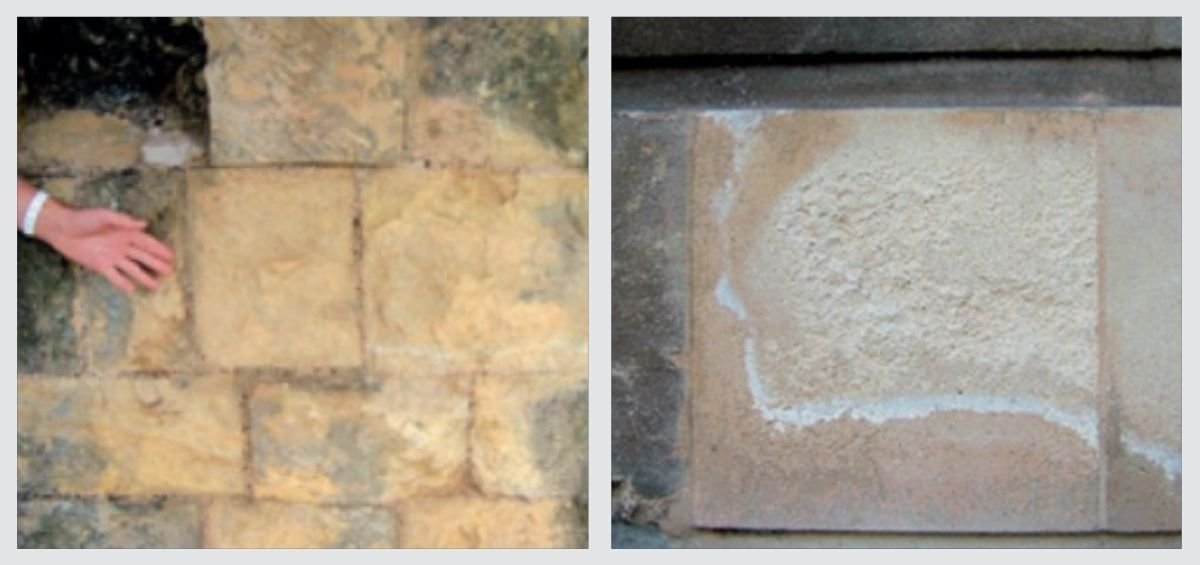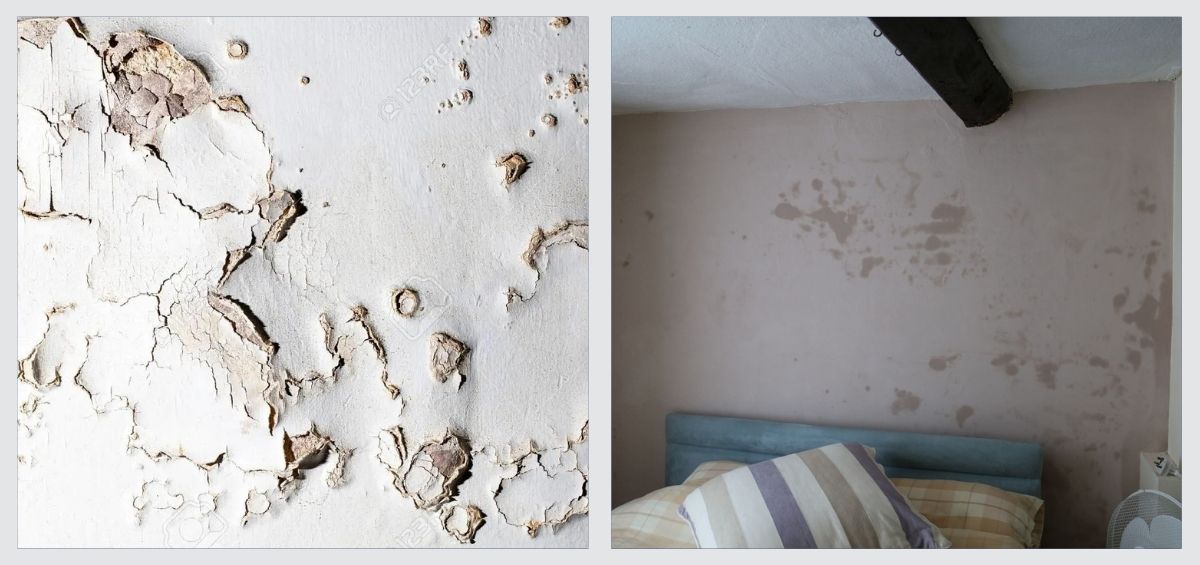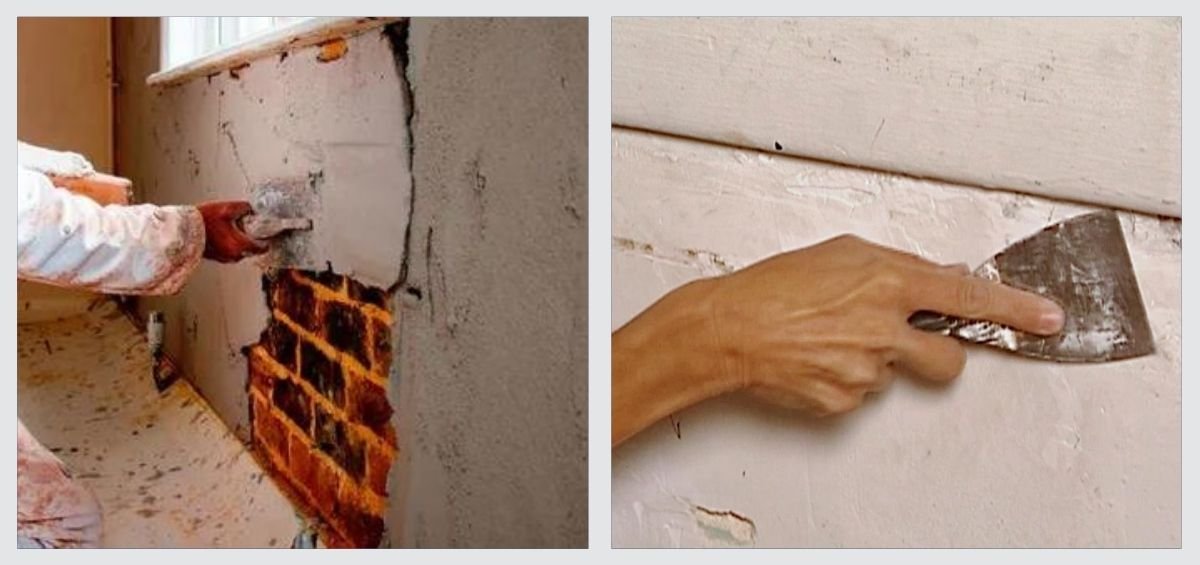Salt-induced damage represents a serious problem which a significant number of buildings must face. Besides other degradation mechanisms such as temperature changes, mechanical erosive actions of wind and water, or water phase changes, salt-induced damage may have both chemical and physical nature that increases the effect of damage. The situation in the building sector would probably be correlated, requiring hundreds of billions of rupees a year as the repair and maintenance costs.

Soluble salts can penetrate into buildings easily with moisture which can further transport them. Therefore, understanding of moisture transport processes in porous building materials is essential to prevent salt-induced damage. The effect of salts in the deterioration of historical buildings, which usually do not have horizontal waterproofing, has long been known and it is recognized worldwide, although it is not well understood, even when many distinct disciplines deal with the weathering caused by salts. On the other hand, not only historical buildings but also modern constructions suffer from the attack of salt solutions. It has been found that different contaminants behave differently on bricks, stones, mortars, and also wood, which seems to react differently to the damaging action of salts and pollutants. Therefore, it is important to understand the problem thoroughly regarding all the porous building materials and salt contaminants. Think damp and the instant thing that springs to mind is water. However, contaminant salts can also cause damp problems, and lead to unsightly surfaces and crumbling walls. Soluble salts known to cause damage to building masonry include chlorides, carbonates, nitrates and sulphates of calcium, magnesium, potassium, sodium sulphate and magnesium chloride

Salt damage in old buildings
The truth about Salts in the walls of old buildings
Rising Damp experts claim salts are present in the wall because ‘rising damp’ climbs the wall, bringing with it salts from the ground. Apparently, our soils are saturated in salts and thus agricultural fertilizers as one source. Not too many of those in the middle of our cities. Broken drains are also a source, so when we do ‘damp’ surveys, we are always on the lookout for broken foul drains with inevitable escape of urea, nitrates, into the surrounding soil.

Why Are Our Buildings Full Of Salts?
The very air we breathe is loaded with acidic gases. The most common is Carbon Dioxide, closely followed by Sulphur and Nitrogen based gases. All of these are constantly reacting with our buildings, degrading the fabric and producing salts.

Owners Of Older Properties, Solid Walled Buildings
They will be more familiar with crumbling stone and plaster than owners of houses built more recently. This is not just because the materials are more prone to damage. Cars have now taken over as the major cause, and falling emissions are balanced by the ever growing number of cars and trucks spewing diesel exhaust

The commonest acid is that formed by the action of rainwater on Carbon Dioxide forming Carbonic Acid. It dissolves calcium carbonate which is the main component of limestone, to form Calcium Bicarbonate; actually better known as baking powder. The problem is, it’s VERY soluble and so the moment it forms, it washes away. And so the stone gradually melts. The problem is, it’s not just limestone that is affected. It is ANY stone or brick with calcium carbonate as the main binder between the grains. So any ‘carbonaceous’ stone will erode as the binder is dissolved.

This Stuff Comes Out Of Car Exhausts And Reacts With Carbonates To Form Gypsum
calcium sulphate, which is a bit less soluble than baking powder, but still washes away in the rain. It can form crusts and blisters on the stone, protecting the surface, but acid attack still goes on underneath, softening the stone further. The sulphate reactions are quite complex, but all you need to know is that when you see the lovely stone of a mellow old limestone building sculpted beneath the cornices and mouldings, it’s traffic fumes that are probably the cause.

There’s Another Pretty Nasty Acid Out There – Nitric Acid
The air we breathe is full of nitrogen – and when it combines with oxygen it forms Nitrogen dioxide. This reacts with water to form nitric acid. A similar reaction then takes place to that of sulphuric and carbonic acids – attacking the weak carbonate structure of building materials, this time producing nitrates rather than sulphates.

All of these salts are very soluble, and easily washed away so the stone just degrades. These wet solutions containing salts are able to invade the stone or brickwork. They are soaked into the masonry during times of wet or damp weather travelling deep into the stonework through its pores, cracks and capillaries. This means that your walls now contain a lot of salt and it did not come from rising damp. It can travel down the walls, into them, as well as up them.

Damage From Salts Crystallizing In Masonry
Wet masonry dries out. Salt damage are formed by acidic rain. It stops eventually and the stone and brick dry out. The salts stay there as they cannot evaporate. NOW we have a problem. As the stone dries, these salts start to crystallize within the pore spaces of the stone. If they don’t fill the pore the first time, next time it rains, more solution is fed to the growing crystal, and it gets bigger – eventually filling the pore completely. A bit like growing copper sulphate crystals in the lab at school when you were a kid. The trouble with these crystals is that they are VERY powerful, and start to ‘jack’ the stone – as they expand and grow, the stone literally explodes, and crumbles.

Hygroscopic Salts In Masonry
If you’ve got those powdery fluffy deposits all over your plasterwork inside then you now know it’s nothing to do with rising anything – it’s the action of acid water on masonry – internally the water being provided by us – from condensation originally. There is another twist to the tale here – these salts attract water. Remember when you put salt on the kitchen table? It gets wet. Well so do the salts in your wall. If the air in the room is warm and humid, the salts in the wall go ‘yippee’ and soak up water and the wall looks wet. If the walls are plastered with lime, the effect of salts is a lot less, and takes many years to do any damage – if kept dry, walls can be soaked in salt, but still function perfectly. If plastered with gypsum, it just blows, peels, bubbles and flakes, and falls off. Gypsum is horrible stuff when used in old houses, and just doesn’t work.

Treating Salt-Contaminated Buildings
If hygroscopic salt is present in your plasterwork, it will attract water even if a damp course is fitted. This is why it’s essential to remove any contaminated plaster before starting any repair work: otherwise, you’re just delaying the problem. The wall should be re-plastered using a plastering system that does not allow salts to migrate to the surface. An additive can be added to your render to help keep salts at bay.
However, don’t rush to re-plaster immediately after removing salt-contaminated plaster. The re-plastering should be delayed for some time to allow soluble salts to move from the brickwork. Delaying re-plastering also allows more residual moisture to dry out so you can more easily establish the level of dampness caused by the hygroscopic salts. If you are short on time, re-plastering can occur shortly after the completion of damp proofing. However, if this is the case, the plaster work must be able to hold back hygroscopic salts during the drying out period. Any waterproofing additives must allow the passage of water vapour. Wall plaster should be allowed to dry out before redecoration. Temporary redecoration such as a coat of emulsion may be carried out but more extensive redecoration shouldn’t take place until the walls have fully dried out.
Healthy Homes with its expert and experienced technical team can assess and repair external walls. Give us a call today on 1800-419-4647.


